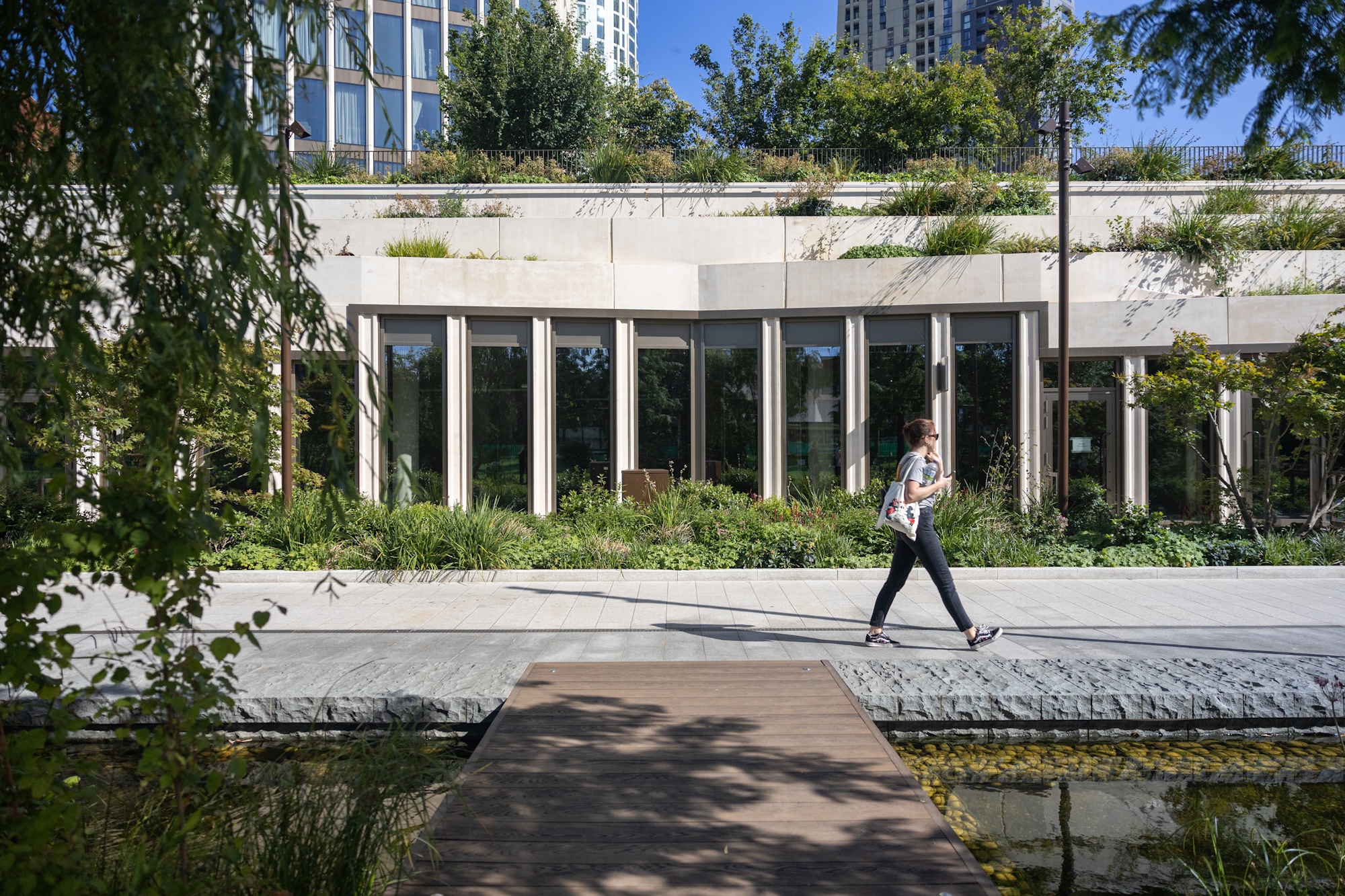
How to define and organise public spaces with landscape edging
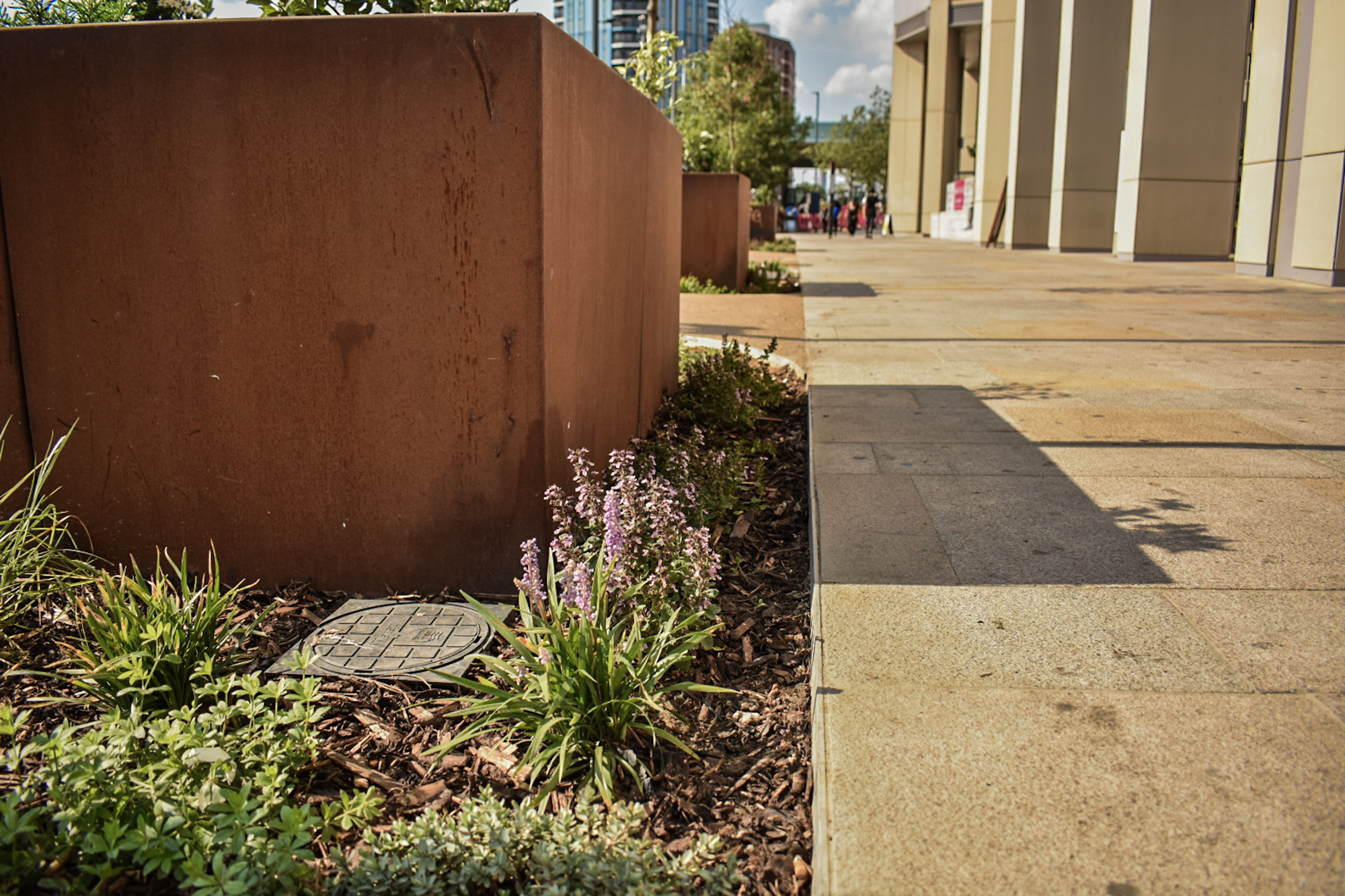
In the design of public spaces, it is often the bold features that attract attention such as striking architecture, open lawns or sculptural installations. Yet it is the subtle details that shape our experience of a space. One of the most quietly powerful tools in landscape design is edging.
Landscape edging does far more than separate grass from gravel. It defines boundaries, organises flow, protects planting and frames the aesthetic of a space. Whether guiding a pedestrian along a walkway, shielding a flowerbed from foot traffic or subtly showing where a public area ends and a private one begins, edging plays a vital role in shaping how we move through our environment.
In this blog, we will explore how landscape edging can transform public spaces. We will examine the psychological impact of defined edges, practical benefits in movement and maintenance and how material choice can elevate a project’s design and durability.
The overlooked importance of landscape edging in public spaces
Landscape edging may be subtle and not often noticed, but it places a crucial role in the functionality and aesthetics of public spaces.
Beyond its visual neatness, landscape edging helps define boundaries between different surface treatments, whether it is lawn and paving, gravel and planting or pathways and water features. This clear separation not only enhances the aesthetic cohesion of a space but also improves durability.
Proper edging supports maintenance by containing materials, reducing weed spread and enabling efficient mowing. It also assists with water management and erosion control, helping to direct runoff and stabilise soil levels.
Landscape edging does more than meets the eye. It is a critical detail that contributes to a space’s safety, usability, longevity and aesthetic appeal.
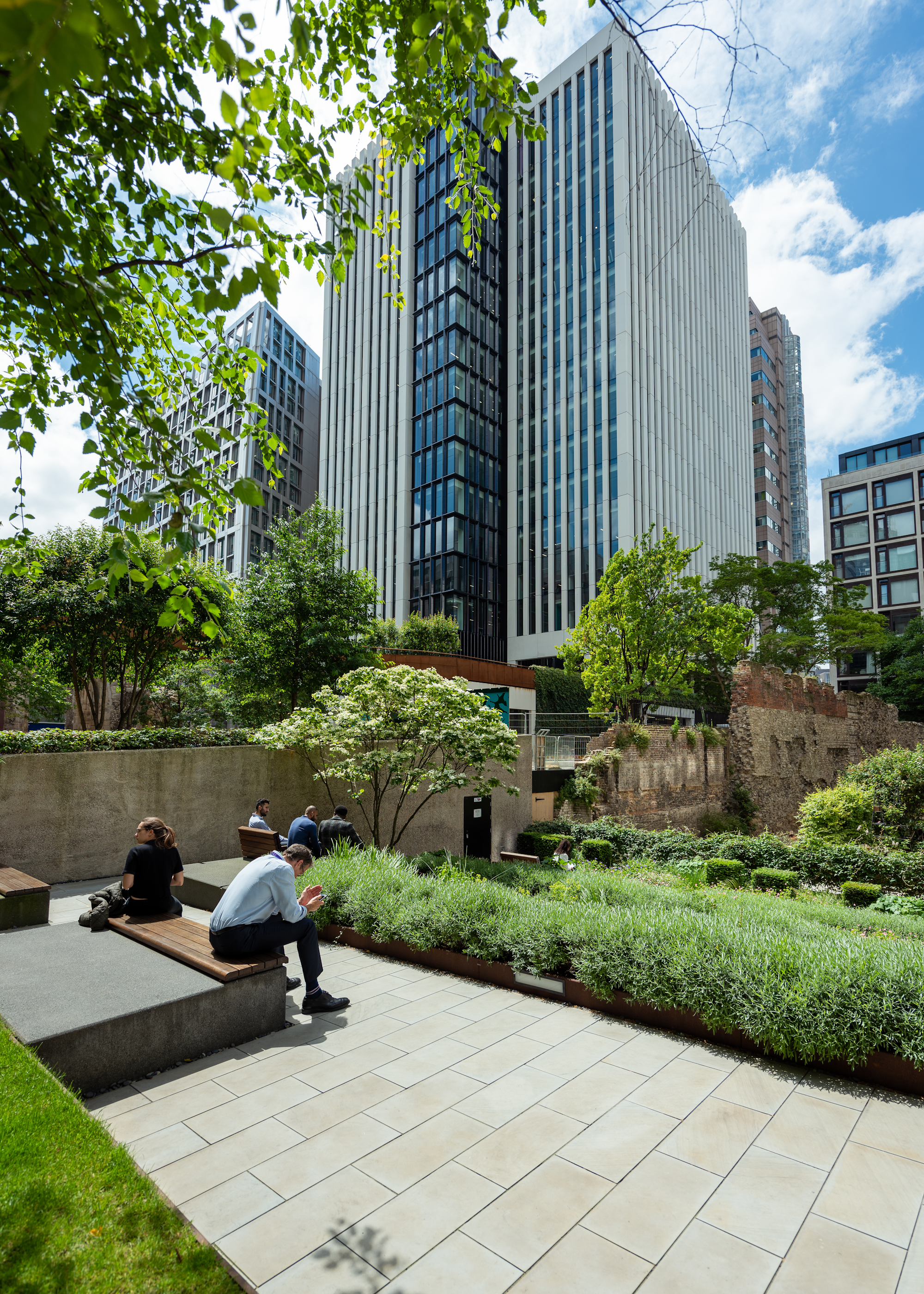
Defining boundaries: How landscape edging organises and differentiates public spaces
Landscape edging is vital for organising and differentiating public spaces by clearly defining boundaries between the different areas. Edging helps to structure outdoor spaces, making them more visually appealing and easier to navigate.
Landscape edging achieves this by:
1. Defining zones and boundaries
Landscape edging creates clear separations between areas like lawns, flowerbeds and paths. This helps prevent the mixing of materials and encourages people to walk on the pathways, instead of trampling plants.
2. Enhancing visual appeal
Visual appeal is an important aspect of a public space. Not only does it encourage people to use the space by making it more inviting, but it can also be used to create curves and patterns to add visual interest.
3. Improving functionality and navigation
One of the most prominent features of landscape edging is the ability to define areas for specific activities. It can define play areas, seating areas or gathering spaces, making it easier for people to navigate to the right area and for it to be utilised for its intended purpose.

Enhancing comfort: The psychological impact of well-defined edges
In well-designed public spaces, comfort is not just about seating or shelter. It is also about how the environment subtly guides and reassures us.
Defined edges create a sense of order and orientation, helping people instinctively understand how to navigate a space. Clear boundaries between different zones can make a space feel more intuitive and less chaotic. This visual clarity reduces uncertainty, and in turn creates a feeling of safety and ease.
In urban environments where sensory input is often high, well-defined edges offer a kind of visual rest, contributing to a more calming and pleasant experience.
When people can easily distinguish between spaces meant for movement and those for relaxation, they are more likely to engage with the environment as intended.
Ultimately, landscape edging supports not just how public spaces look but how people feel within them.
Safety and accessibility: Guiding movement and protecting greenery
In any public space, safety and accessibility are key priorities and landscape edging plays an essential role in both. By clearly marking boundaries, landscape edging helps manage how people move through a space while protecting the natural elements that make it inviting.
Landscape edging can contribute to a safer, more accessible environment by:
- Guiding pedestrian movement: Edging defines walkways and directs foot traffic. This helps people understand where to walk and where not to.
- Supporting accessibility for all users: Clear, contrasting edges can assist individuals with visual impairments or mobility challenges in navigating spaces more confidently and independently.
- Protecting planting and green spaces: Landscape edging acts as a physical barrier that deters trampling of lawns, flower beds and other soft landscaping. This helps preserve their health and appearance.
- Reducing maintenance needs: By preventing erosion and keeping surfaces in their place, landscape edging helps limit damage, reduce upkeep and extend the life of the landscape.
- Improving spatial clarity: Clearly separated zones reduce visual clutter and makes spaces easier to interpret and enjoy, particularly in busy or urban settings.
Well-placed edging not only improves the flow of movement but also reinforces the integrity and usability of a space. This keeps it safer, tidier and more enjoyable for everyone to use.
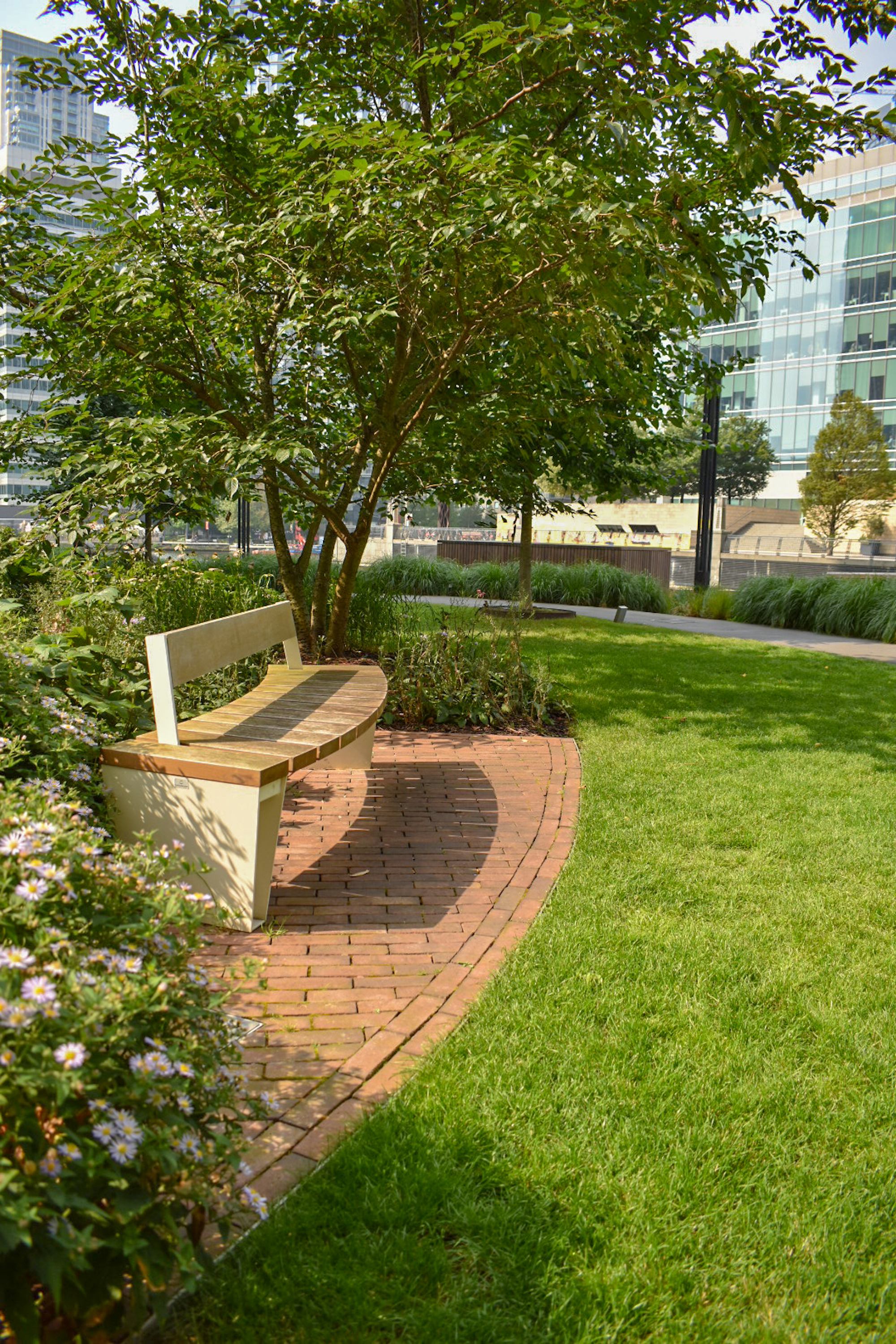
Elevating aesthetics: Visual benefits of landscape edging in public settings
While the practical advantages of landscape edging are clear, its visual impact should not be overlooked. Edging helps tie a design together, creating a polished, intentional look that elevates the overall aesthetic of a public space.
Whether subtle and minimal or bold and expressive, the right edging can enhance the character of the space by reinforcing lines, shapes and textures already present in the landscape.
The visual benefits of landscape edging include:
- Creates clean, defined lines: Edging adds sharp definition between materials, giving the space a crisp, well-maintained appearance.
- Improves visual flow: Consistent edging helps guide the eye through a space. This enhances the perception of structure and organisation.
- Supports design cohesion: Material and style choices in edging can reflect or contrast with other elements to reinforce the overall design.
- Adds permanence and quality: Professionally installed edging signals care and investment, which can elevate the perceived value of a public space.
Aesthetics matter, especially in shared environments that aim to encourage use. Landscape edging is a small detail that can have a powerful visual impact.
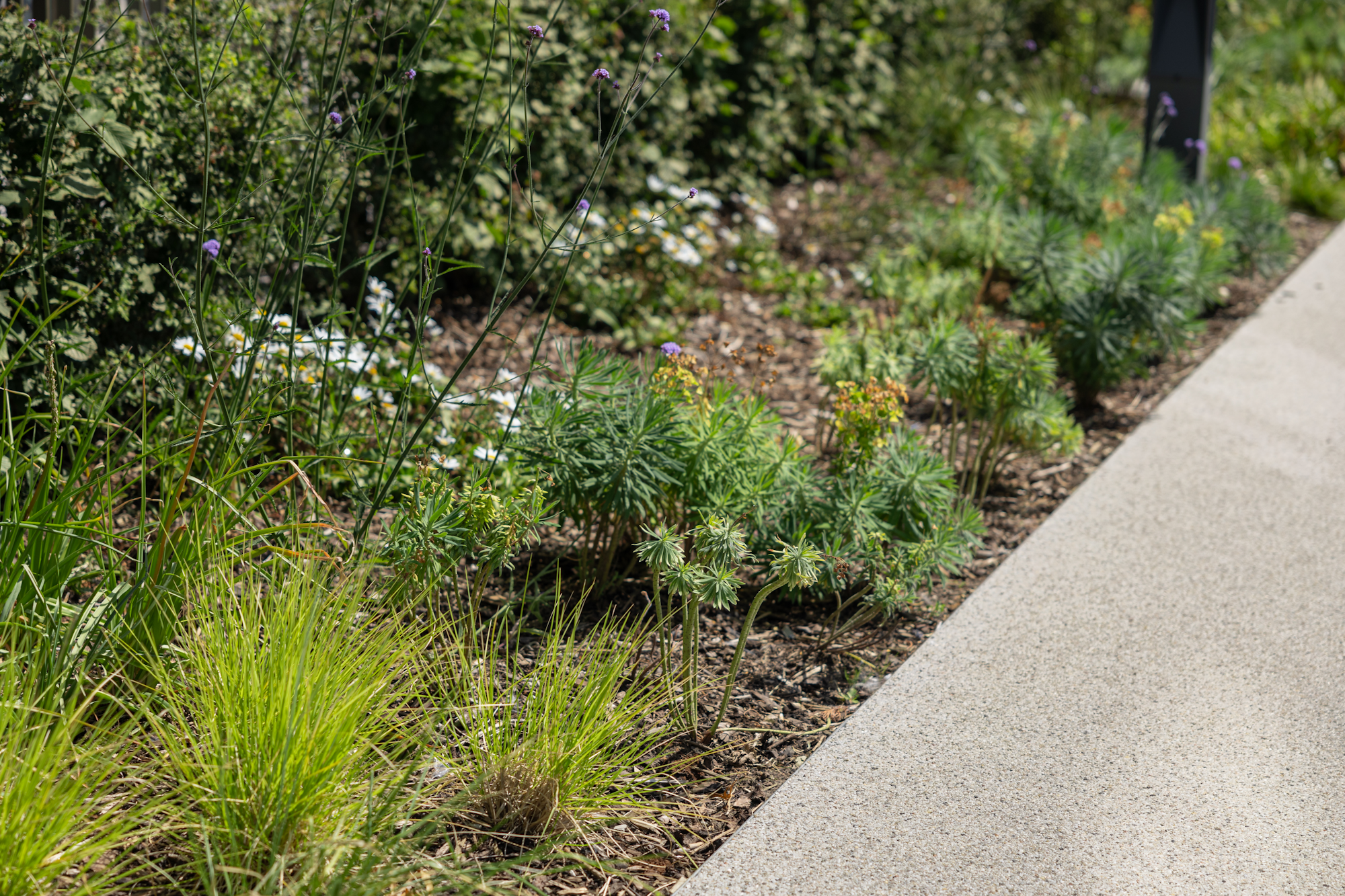
Material matters: Choosing the right lawn edging and the best metal options
Selecting the right landscape edging material is just as important as the placement and design. In public spaces, durability, safety and aesthetics are critical.
Among the various material options for landscape edging, metal edging stands out for its strength, flexibility and clean finish. At Kinley, we specialise in high-performance metal edging solutions designed to meet the demands of modern public landscapes.
Metal edging stands out for public landscapes:
- Durability: Public spaces face high footfall, exposure to the elements and ongoing maintenance. Metal edging, especially steel and aluminium, offers superior longevity and resistance to weather, impact and wear.
- Aesthetic versatility: Metal edging can be formed into crisp lines or smooth curves. It comes in a range of finishes from raw and rustic to polished, allowing it to suit both contemporary and traditional settings.
- Environmental impact: Recyclable and low-maintenance, metal edging is often the more sustainable choice over plastic garden edging or treated timber, especially in long-term public projects.
- Flexibility for complex designs: Modern public spaces often include curves, level changes and mixed materials. Metal edging can be bent and curved to accommodate even the most intricate design details, unlike alternatives such as wood.
Steel border edging
Steel lawn edging, such as Fort, has exceptional strength and durability, making it ideal for high-traffic public spaces.
It withstands heavy use and harsh weather conditions while maintaining its shape and form. Its rigidity is perfect for sharp lines and structural borders.
Aluminium edging
Aluminium edging, such as AluExcel, offers a lightweight yet robust alternative, prized for its corrosion resistance and ease of installation.
It is particularly suited for areas with less heavy foot traffic but where flexibility and longevity are still essential.
Its ability to bend easily makes aluminium a great choice for curved or intricate landscape designs.

Transforming public spaces: The lasting impact of landscape edging from Kinley
At Kinley, we believe that the smallest design decisions can have the biggest impact, and landscape edging is the perfect example. Our metal landscape edging has helped transform a wide variety of public spaces, from bustling city squares to tranquil parks and community gardens.
Whether the goal is to organise complex environments, reinforce paths or simply elevate a landscape with clean lines and refined materials, our metal edging provides the durability and design flexibility needed to achieve lasting results. It not only supports function and aesthetics, but also contributes to a safer, more inclusive and lower-maintenance space that serve the public for years to come.
Explore our full range of metal edging products or contact our experts today to get started on your project.
